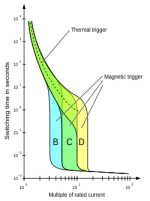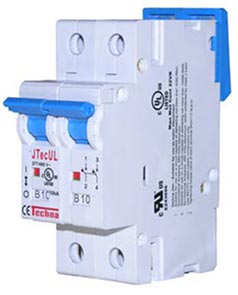JohnHess
Member
- Location
- North East US
- Occupation
- Electrical Contractor
never mind, what I just said was completely off base 
I've put EVSE on an apartment building with 14 units of housing served by a single 100amp breaker.A lot of inspectors outright say that there’s no way a 100 amp service on a single-family dwelling can support a 48 amp EV charger because they’ve always seen load calculations of the dwelling being in the 80 amp range.
So when coming to them with data saying that the house is actually under 20 amp, many are just going to call BS. Having guidance from their governing body would prevent this from becoming an issue.
I've put EVSE on an apartment building with 14 units of housing served by a single 100amp breaker.
With no pushback from the AHJ. The cost is a $350 adder for active load management.
(kWh used during a 15 minute interval / 15 minutes) * 60 minutes/hr = average kW during the interval. And 60/15 = 4. So your procedure also multiplies by 4.Multiplying by 4 is a waste of time. Just find the highest interval and divide it by 15. This is your maximum average demand per minute, but it is still up to the AHJ.
I recall that some utilize 5 minute intervals. Some may just use 15 min intervals, same as the residential smart meters. Some may measure it in kVA? I'm unaware of a standard. In any case I agree that the notion that there's some industry standard definition of demand that's more strict and rigorous than 15min interval energy consumption has not been supported here. AHJs may need some educating, but that can always be said.P.S. I think we've discussed before the idea that for demand data, the utility might record, say, 1 minute average power usage data, and then use a 15 minute sliding window, and the peak demand would be the largest number you can get by summing up 15 consecutive 1 minute average power figures.
In that case, the underlying 1 minute data (not reported to you) is equivalent to kWh used each minute. If you only have 15 minute kWh usage data, you can still provide an upper bound for the 15 minute sliding window peak demand, based on the largest sum of two consecutive 15 minute kWh usage numbers. Because the sum for any 15 consecutive minutes within that 30 minute interval will certainly be less than the sum of all 30 minutes.
However, I don't see the text of 220.87 as requiring the usage of a sliding window, or even such fine grained measurement as 15 minute interval data (for the case of 12 months of data). The 125% factor applied to the maximum observed demand is apparently judged sufficient to cover any undercount attributable to a longer averaging interval.
Cheers, Wayne
Read through this thread and you'll understand why HHS inspectors won't touch these demand calculations.A lot of inspectors outright say that there’s no way a 100 amp service on a single-family dwelling can support a 48 amp EV charger because they’ve always seen load calculations of the dwelling being in the 80 amp range.
So when coming to them with data saying that the house is actually under 20 amp, many are just going to call BS. Having guidance from their governing body would prevent this from becoming an issue.
Even if it passes plan check?inspectors won't touch these demand calculations.
my local inspectors don't give a freak about what plan check says. they check what they gonna check.Even if it passes plan check?
@JohnHess I respectfully disagree.The “demand” could be a very high amount of power drawn for only one second. We would have to go by that high amount of power, not what it averaged out to over 15 minutes.


But the inspectors wouldn’t disagree, that’s how they see it.@JohnHess I respectfully disagree.
The inspectors are generally the ones doing the plan review.Even if it passes plan check?
Here in NJ an HHS electrcial inspector is doing the plan review and it's probable that they won't approve a load calculation cobbled together with the historical data mentioned in this thread.Even if it passes plan check?
Eh, using 12 months of 15 minute kWh data clearly complies with 220.87, and if the electrical inspectors in your area don't accept that, they need some further education.Here in NJ an HHS electrcial inspector is doing the plan review and it's probable that they won't approve a load calculation cobbled together with the historical data mentioned in this thread.
What is evident from this thread is that that calculation method is full of holes so it can easily be rejected by the plan reviewer which is why the question was asked in the first place. I'm curious to see if John can get an answer from the State.Eh, using 12 months of 15 minute kWh data clearly complies with 220.87, and if the electrical inspectors in your area don't accept that, they need some further education.
Cheers, Wayne
Can you clarify what you mean by 'sliding window' say that for 60 1 min values say every 5th minute reads at 10 and all the other values were 2.P.S. I think we've discussed before the idea that for demand data, the utility might record, say, 1 minute average power usage data, and then use a 15 minute sliding window, and the peak demand would be the largest number you can get by summing up 15 consecutive 1 minute average power figures.
Sorry, not seeing the holes, certainly not more than is reasonably covered by the 125% factor in 220.87.What is evident from this thread is that that calculation method is full of holes
Your example is regular enough that the 15 minute fixed window method (looking at minutes 0-14, 15-29, 30-44, and 45-59) will give you the same answer as a sliding window method (which would consider minutes 0-14; then 1-15; then 2-16, etc up to 45-59).Can you clarify what you mean by 'sliding window' say that for 60 1 min values say every 5th minute reads at 10 and all the other values were 2.
My area most electrical goes to "outside plan check" which are contractors.The inspectors are generally the ones doing the plan review.
I agree no holes, just some basic math to convert 15 minute interval kilowatt hour data to demand. Seems pretty simple to me, but then again I was a math majorSorry, not seeing the holes, certainly not more than is reasonably covered by the 125% factor in 220.87.
Cheers, Wayne

